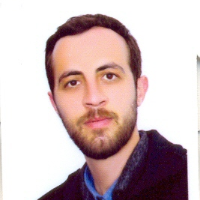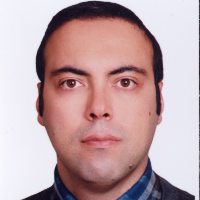Optimization of Callus Induction and Somatic Embryogenesis in Two Genotypes of Medicinal Chavil Plant (Ferulago angulata L.)
Author(s):
Abstract:
Background And Objectives
In order to produce artificial seed, somatic embryogenesis has been introduced as one of the most effective methods to overcome the problems of cultivation, propagation and conservation of medicinal plants. For this reason, callus induction, embryogenesis and somatic embryos of Chavil (Ferulago angulata L.) were evaluated on diluted Murashige and Skoog growth medium ( MS) in three separate experiments.Materials And Methods
The first experiment (callus induction) was done in a two factors factorial experiment consists of hormones combination (in 10 concentration combination of naphthalene acetic acid (NAA) and benzyl amino-purine (BAP)( and genotype (Koohgol and Chehel-Cheshmeh genotypes) based on a completely randomized design with three replications in the central laboratory of agricultural college, yasouj univeristy. Factors of the second experiment (somatic embryogenesis) were consisted of genotype, explant (root and shoot) and light (full light and dark). In the third study (assessment of somatic embryo), after seeing signs of torpedo embryo, number of globular, heart and torpedo embryos formed on the surface of embryogenic calluses in each genotype counted and were compared using T-test.Results
In callus induction experiment (first experiment), genotype and hormonal composition in combination had a great impact on callus induction, so that the interaction between the two treatment groups was significant at 1% probability level. Explants of root and shoot in both genotypes were produced pre-embryo in the same concentration (1.5 mg/l) of NAA and BAP. Under this condition, the lowest callus induction percentage (zero ) was observed in the control (hormone-free) and the treatments that high concentrations of auxin or cytokinin concentration was used and or one of the hormones was absent in the growth medium. In the embryogenesis experiment (second experiment) shoot and root explants have formed globular embryo in Koohgol and Chehel-cheshmeh genotypes, respectively. The results of this experiment also showed that under illumination condition, by decreasing auxin concentration the shoot explant in Koohgol and root explant in the Chehel-cheshmeh have produced calluses with white and brittle texture with capability to producing embryo. By transferring calluses with globular embryos to hormone-free medium, development of globular embryo to torpedo was continued. In the third study (assessment of somatic embryo), as embryogenic callus formation conditions were the same, so only two genotypes were compared in terms of the number of somatic embryo and observed that both genotypes answered similarly to somatic embryo formation.Conclusion
Overall results of this experiment showed that explant type is related to genotype and it is possible to produce somatic embryos and synthetic seed by using callus with white and brittle texture. Keywords:
Pro , embryo , Callus Induction , Embryogenesis , Chavil , Growth Medium
Language:
Persian
Published:
Journal of Plant Production, Volume:23 Issue: 3, 2016
Pages:
41 to 62
magiran.com/p1640346
دانلود و مطالعه متن این مقاله با یکی از روشهای زیر امکان پذیر است:
اشتراک شخصی
با عضویت و پرداخت آنلاین حق اشتراک یکساله به مبلغ 1,390,000ريال میتوانید 70 عنوان مطلب دانلود کنید!
اشتراک سازمانی
به کتابخانه دانشگاه یا محل کار خود پیشنهاد کنید تا اشتراک سازمانی این پایگاه را برای دسترسی نامحدود همه کاربران به متن مطالب تهیه نمایند!
توجه!
- حق عضویت دریافتی صرف حمایت از نشریات عضو و نگهداری، تکمیل و توسعه مگیران میشود.
- پرداخت حق اشتراک و دانلود مقالات اجازه بازنشر آن در سایر رسانههای چاپی و دیجیتال را به کاربر نمیدهد.
In order to view content subscription is required
Personal subscription
Subscribe magiran.com for 70 € euros via PayPal and download 70 articles during a year.
Organization subscription
Please contact us to subscribe your university or library for unlimited access!



